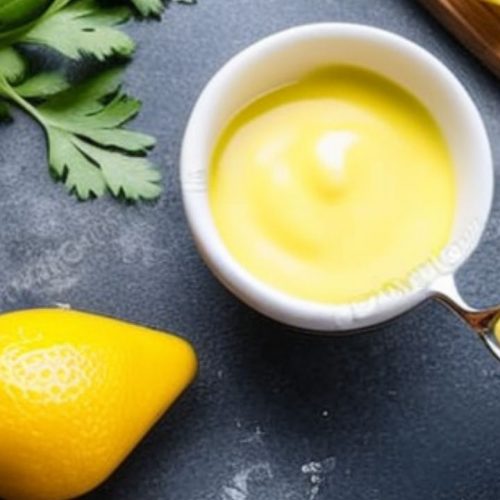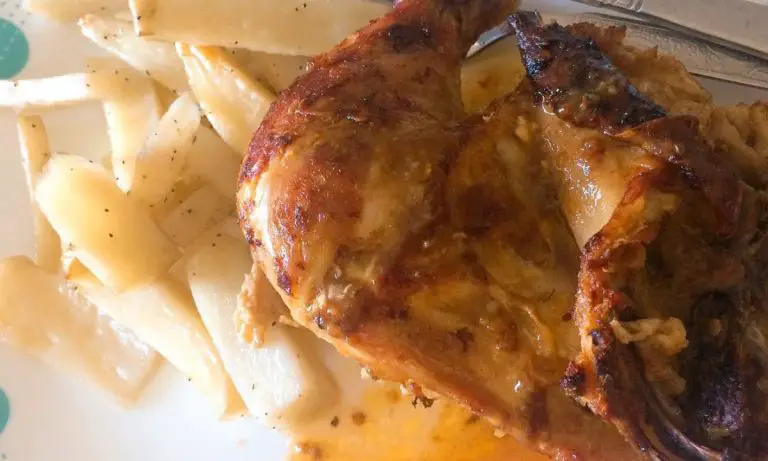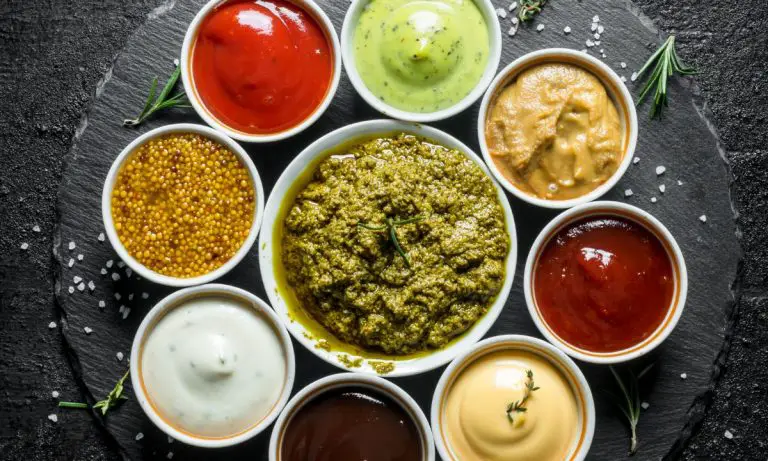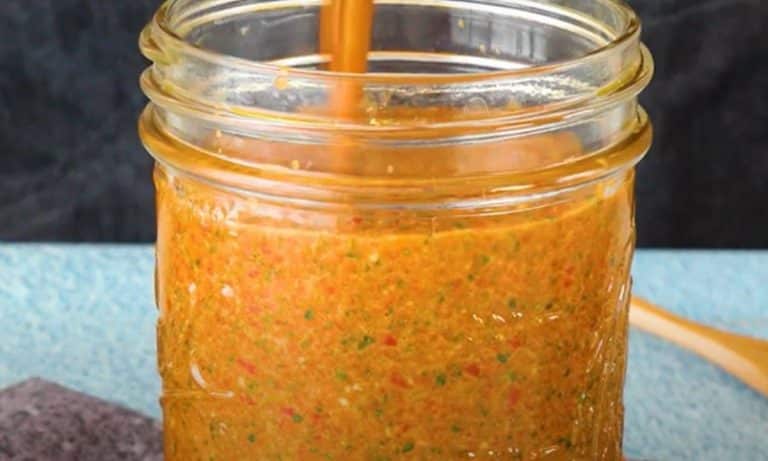Hollandaise Sauce Recipe
I’ve cooked plenty. From baking to cooking, the kitchen is full of new and exciting things to learn. I always return to Hollandaise sauce.
Hollandaise sauce’s rich texture and tangy taste are irresistible. From eggs Benedict to grilled veggies, it goes with everything. Best part? Homemade is simple.
I found Hollandaise sauce at a fancy brunch with friends. A hearty dollop of Hollandaise sauce topped my eggs, Benedict. The thick sauce added richness without overpowering the eggs and English muffins.
How to Make Hollandaise Sauce
I’ve tried making Hollandaise sauce since then. I was scared because I had heard Hollandaise sauce was hard to make and could curdle or separate. I learned to make Hollandaise sauce with practice and a few tips. I’ll teach you now.
I’ll show you how to make Hollandaise sauce at home and use it in real life. After reading this, you’ll be able to make a delicious Hollandaise sauce and amaze your friends and family. So begin!
Hollandaise Sauce Ingredients
- 3 egg yolks
- 1 tablespoon of freshly squeezed lemon juice
- 1/2 cup (1 stick) of unsalted butter, melted and warm
- Salt and cayenne pepper to taste
Step by Step Instructions to Make Hollandaise Sauce
Step 1: Set up a double boiler
Fill a saucepan with about an inch of water and bring it to a simmer. Meanwhile, prepare a heatproof bowl that fits snugly on top of the saucepan without touching the water. This will create a double boiler that will gently heat the egg yolks without scrambling them.
Step 2: Whisk the egg yolks and lemon juice
In the heatproof bowl, whisk together the egg yolks and lemon juice until frothy and well combined.
Step 3: Slowly add the melted butter
Place the bowl over the simmering water, making sure the water doesn’t touch the bottom of the bowl. While whisking constantly, slowly drizzle in the melted butter. Continue whisking until the mixture thickens and becomes smooth.
Step 4: Season and Serve
Remove the bowl from the heat and season the Hollandaise Sauce with salt and cayenne pepper to taste. Serve the sauce immediately or keep it warm in a heatproof bowl set over a pot of warm water until ready to serve.
Homemade Hollandaise Sauce Tips
With a few steps, you can make a smooth Hollandaise Sauce for your next meal.

Room-temperature egg yolks and heated melted butter prevent the sauce from splitting or curdling. The sauce may not emulsify if the components are cold or heated.
Making a smooth Hollandaise Sauce requires whisking while carefully adding melted butter. This emulsifies and prevents sauce separation.
Avoid over-boiling water in a double boiler. Overheated water can curdle egg yolks.
Fresh lemon juice brightens the sauce’s creamy, buttery flavor. Bottled lemon juice may taste bitter or fake.
Hollandaise Sauce needs salt and cayenne pepper according to taste. Start small and add more to taste.
Hollandaise Sauce Recipes FAQs
Is Hollandaise Sauce difficult to make?
Hollandaise Sauce takes some time, but it’s not as hard as it seems. The most crucial step is mixing the egg yolks while carefully adding the melted butter. The sauce may split or curdle if you hurry or stop whisking.
Can I use a blender or a food processor to make Hollandaise Sauce?
Yes, you can use a blender or a food processor to make Hollandaise Sauce. This method is quicker and easier than making it by hand, but it also requires a bit of practice. The key is to use warm melted butter and slowly pour it into the blender or food processor while it’s running on low speed.
Can I make Hollandaise Sauce ahead of time?
Hollandaise Sauce is best served fresh, but you may make it ahead and keep it warm in a heatproof bowl over a pot of heated water. Avoid boiling the water, which could curdle the sauce. If refrigerated for two days, Hollandaise Sauce may separate or become gritty when reheated.
How to Make a Double Boiler
So, How do I make a double boiler? Fill a small pot with an inch or two of water and simmer to produce a double boiler. Then, lay a heatproof dish over the saucepan without touching the water.
This gently heats butter, cocoa, and delicate sauces like Hollandaise without burning them.
Hollandaise Sauce Uses
Hollandaise Sauce complements many foods. Popular serving methods include:
- Eggs Benedict – a classic brunch dish that consists of poached eggs, ham, and English muffins topped with Hollandaise Sauce.
- Grilled or steamed vegetables – Hollandaise Sauce adds a touch of richness and flavor to grilled or steamed asparagus, broccoli, or cauliflower.
- Seafood – Hollandaise Sauce pairs well with seafood dishes like salmon, crab cakes, or shrimp.
- Roasted or grilled meats – drizzle Hollandaise Sauce over roasted or grilled chicken, steak, or pork for a decadent and flavorful finish.
When serving Hollandaise Sauce, it’s best to use it immediately after making it, as it can thicken and separate if left sitting for too long. If you need to keep the sauce warm, place it in a heatproof bowl set over a pot of warm water, but be careful not to let the water boil.
And remember, a little goes a long way – Hollandaise Sauce is rich and decadent, so use it sparingly to avoid overwhelming the other flavors in your dish.
How to Store Easy Hollandaise Sauce
Hollandaise Sauce should be served immediately, but leftovers can be refrigerated for 2 days. Put Hollandaise Sauce in an airtight container and refrigerate it right away.
Reheat the sauce in a double boiler, whisking continually, until smooth. After refrigerating, whisk in a little warm water or lemon juice to recombine the sauce.
Hollandaise Sauce can grow bacteria if improperly stored or left out at room temperature. Never leave leftover Hollandaise Sauce out for longer than 2 hours to avoid food safety issues.
How to Reheat Hollandaise Sauce
To prevent overcooking or separating, carefully reheat leftover Hollandaise Sauce. How:
Hollandaise Sauce to a heatproof basin. Place the bowl over a saucepan of hot water without touching it. When it reheats, whisk the sauce and add warm water or lemon juice as needed.
Whisk the sauce until it’s smooth, but don’t overheat it. Remove sauce from the heat and serve immediately.
Variations of Hollandaise Sauce
Foodies have relished Hollandaise Sauce for years. The basic Hollandaise Sauce recipe is simple, but many modifications can give your food a unique flavor. Popular versions include these.
- Béarnaise Sauce: Hollandaise Sauce with shallots, tarragon, and white vinegar. It complements steak, grilled chicken, and roasted vegetables.
- Citrus Hollandaise Add lemon or orange juice to the sauce for a zesty flavor. Grilled shrimp or crab cakes go great with this rendition.
- Spicy Hollandaise Whisk in hot sauce, cayenne pepper, or red pepper flakes for a spicy Hollandaise. Grilled or charred fish goes well with this.
- Mustard Hollandaise Add Dijon mustard to the original recipe for a zesty, flavorful sauce. It goes great with roasted or grilled meats and steamed veggies.
- Herb Hollandaise Brighten the basic recipe with fresh herbs like basil, parsley, or chives. Grilled or roasted vegetables go well with this.
- While experimenting with Hollandaise Sauce, remember the basic recipe and change the components accordingly. A few simple ingredients can make a sauce that elevates your cuisine.

Easy Hollandaise Sauce Recipe
Equipment
- Double boiler or large saucepan and heatproof bowl
- Whisk
Ingredients
- 3 egg yolks
- 1 tablespoon of freshly squeezed lemon juice
- 1/2 cup 1 stick of unsalted butter, melted and warm
- Salt and cayenne pepper to taste
Instructions
- Fill a saucepan with about an inch of water and bring it to a simmer. Meanwhile, prepare a heatproof bowl that fits snugly on top of the saucepan without touching the water. This will create a double boiler that will gently heat the egg yolks without scrambling them.
- In the heatproof bowl, whisk together the egg yolks and lemon juice until frothy and well combined.
- Place the bowl over the simmering water, making sure the water doesn’t touch the bottom of the bowl. While whisking constantly, slowly drizzle in the melted butter. Continue whisking until the mixture thickens and becomes smooth.
- Remove the bowl from the heat and season the Hollandaise Sauce with salt and cayenne pepper to taste. Serve the sauce immediately or keep it warm in a heatproof bowl set over a pot of warm water until ready to serve.
Notes
- A double boiler evenly heats hollandaise sauce. Stir slowly so everything melts.
- Be calm if your sauce breaks! Even the best cooks experience this during emulsion! Take the sauce off the heat and put it on the counter. Whisk until smooth, then heat to thicken.
- In a sauce using egg yolks, use large, fresh eggs. This gives the best sauce consistency!






